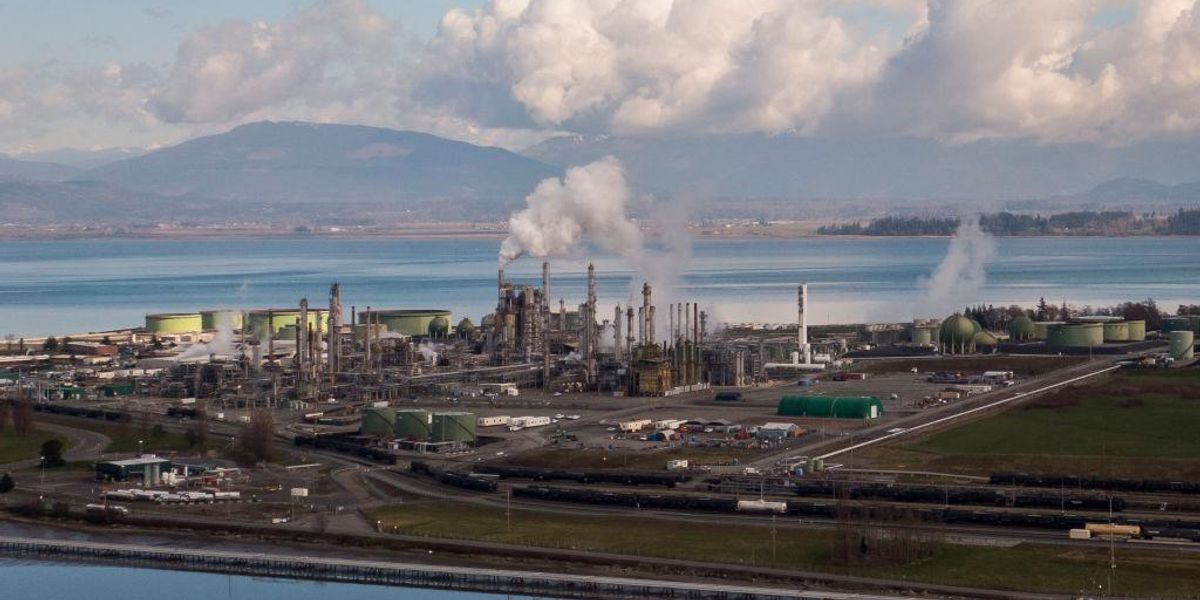
The U.S. Environmental Protection Agency's newly released plan for regulating wastewater pollution, including discharges of toxic "forever chemicals," is far too muted and sluggish, a progressive advocacy group warned Friday.
The Environmental Working Group (EWG) detailed how the EPA's long-awaited Effluent Guidelines Program Plan 15 postpones sorely needed action to rein in widespread contamination from per- and polyfluoroalkyl substances (PFAS). PFAS are a class of hazardous synthetic compounds widely called forever chemicals because they persist in people's bodies and the environment for years on end.
"We are deeply concerned that the EPA is punting on restrictions for PFAS polluting industries like electronics manufacturers, leather tanners, paint formulators, and plastics molders," said Melanie Benesh, EWG's vice president of government affairs. "We are also alarmed that the EPA's proposed restrictions on some of the most serious PFAS polluters—chemical manufacturers and metal finishers—are also getting delayed, with no timeline for when those limits will be final, if ever."
According to EWG, the EPA's new plan "falls short" of its pledge, made in the agency's 2021 PFAS Strategic Roadmap, to "get upstream" of the forever chemicals problem.
As the watchdog summarized:
The EPA confirmed that by spring 2024—nine months later than previously scheduled—it will release a draft regulation for manufacturers of PFAS or those that create mixtures of PFAS. The agency will do the same for metal finishers and electroplaters by the end of 2024, a delay of six months. The EPA did not announce when final rules will be available for these industries.The agency will also begin regulating PFAS releases from landfills but did not provide a timeline for a final rule.
For all other industrial categories the EPA considered for PFAS wastewater limitation guidelines, the new plan includes more studies and monitoring, likely delaying restrictions on these sources indefinitely.
"Polluters have gotten a free pass for far too long to contaminate thousands of communities. Now they need aggressive action from the EPA to stop PFAS at the source," Benesh said. "But the EPA's plan lacks the urgency those communities rightfully expect."
"Although it's a good thing the EPA is committing to address PFAS discharges from landfills—a source of pollution that disproportionately affects vulnerable communities—it's also frustratingly unclear from EPA's plan when, if ever, those limits will materialize," said Benesh.
"Given the glacial pace of change in the EPA's plan," she added, "states should not wait for the EPA to act on PFAS."
"Polluters have gotten a free pass for far too long to contaminate thousands of communities. Now they need aggressive action from the EPA to stop PFAS at the source."
Scientists have linked long-term PFAS exposure to numerous adverse health outcomes, including cancer, reproductive and developmental harms, immune system damage, and other negative effects.
A peer-reviewed 2020 study estimated that more than 200 million people in the U.S. could have unsafe levels of PFAS in their drinking water. The deadly substances—used in dozens of everyday household products, including ostensibly "green" and "nontoxic" children's items, as well as firefighting foam—have been detected in the blood of 97% of Americans and in 100% of breast milk samples. Such findings stem from independent analyses because the EPA relies on inadequate testing methods.
Researchers have identified more than 57,000 sites across the U.S. contaminated by PFAS. Solid waste landfills, wastewater treatment plants, electroplaters and metal finishers, petroleum refiners, current or former military facilities, and airports are the most common sources of forever chemical pollution. Industrial discharges of PFAS are a key reason why 83% of U.S. waterways contain forever chemicals, tainting fish nationwide.
Some congressional Democrats are "trying to force the EPA to address PFAS more quickly," EWG noted.
The Clean Water Standards for PFAS Act, introduced in 2022 by Rep. Chris Pappas (D-N.H.) and Sen. Kirsten Gillibrand (D-N.Y.), would require the EPA to establish PFAS wastewater limitation guidelines and water standards for PFAS in nine distinct industry categories by the end of 2026.
This content originally appeared on Common Dreams and was authored by Kenny Stancil.
Kenny Stancil | Radio Free (2023-01-21T17:47:16+00:00) EPA Plan for Forever Chemical Discharges ‘Lacks the Urgency’ Needed, Watchdog Says. Retrieved from https://www.radiofree.org/2023/01/21/epa-plan-for-forever-chemical-discharges-lacks-the-urgency-needed-watchdog-says/
Please log in to upload a file.
There are no updates yet.
Click the Upload button above to add an update.